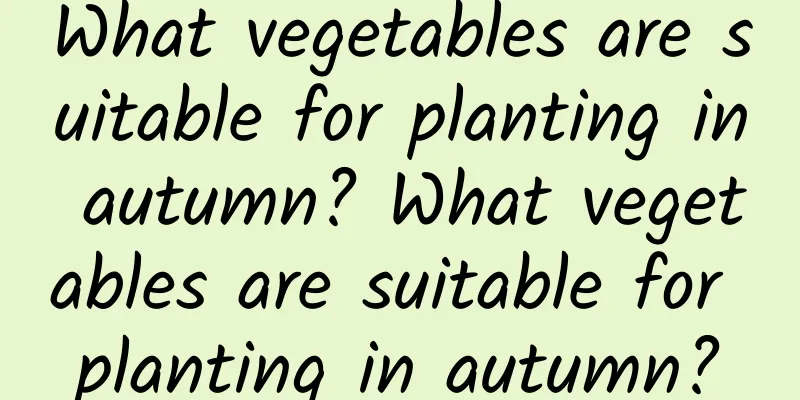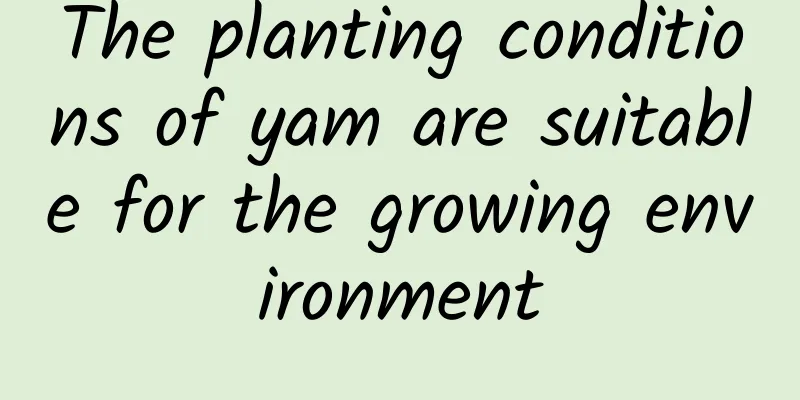What vegetables are suitable for planting in autumn? What vegetables are suitable for planting in autumn?

|
In autumn, you can plant more cold-resistant vegetables so that they will not be damaged by frost when winter comes, such as cabbage, radish, cucumber, tomato, pepper, Chinese cabbage, broccoli, green beans, potatoes, spinach, coriander and other vegetables. 1. Broccoli Broccoli is extremely cold-resistant. If it is sown in autumn, it can resist frost and grow well. Broccoli has a cute appearance and high nutritional value, ranking first in the average nutritional value and disease prevention function of vegetables. 2. Potatoes Potatoes are a common vegetable in winter. They are suitable for planting in spring and autumn. The temperature and humidity in autumn are suitable for the growth of potatoes. Potatoes are rich in nutrients and can be made into a variety of delicious foods such as French fries, potato chips and mashed potatoes. They are very worth planting. 3. Coriander Coriander has a unique taste and is a common side dish. Of course, some people cannot stand its aroma. Coriander is best planted in the autumn of each year. Just sow the seeds into the soil and keep the soil slightly moist. The mature coriander can be harvested in about 50 days. 4. French beans In addition to choosing to sow green beans in spring, you can also plant them in autumn. Green beans are not resistant to high temperatures, but they have a certain degree of resistance to low temperatures. Therefore, it is very suitable to plant green beans after the high temperatures in midsummer. Generally, green beans will bloom and bear fruit after 2 months. Tips for growing vegetables in autumn1. Planting method: Before planting vegetables in autumn, the soil needs to be rearranged. It is best to deep plow and then expose it to the sun. This can help kill bacteria and fertilize the soil. Weeding is also very important because weeds also need to absorb nutrients. If there are too many weeds, it will lead to nutrient loss. 2. Temperature management: Vegetables require certain temperatures for growth. After planting in autumn, try to ensure the appropriate temperature, especially for greenhouse planting. The temperature should be kept at around 22 degrees. This is mainly to help prevent frost damage. 3. Water and fertilizer management: Because the weather in autumn is very dry, vegetables whose roots and stems grow in the soil must be watered more frequently. They must not be allowed to dry out. However, they should not be watered too much at one time. When fertilizing, it is best to choose farmyard manure to ensure sufficient fertilizer. |
<<: How to deal with Kalanchoe after it blooms? How to prune after it withers
>>: What vegetables are best to grow in May?
Recommend
What flowers are suitable for growing in Jinan? What are the city flowers and trees?
1. Climate characteristics of Jinan Jinan is loca...
How to grow taro
1. Maintenance methods 1. Temperature: It likes w...
Pearl plum planting conditions and climatic conditions in the planting area
Introduction to Pearl Lee Pearl plum is a new plu...
When is the best time to plant broad beans?
Broad bean , also known as broad bean, orchid bea...
How to make dried figs
Material selection and slitting Choose a large, f...
Reasons why Clivia does not bloom
Excessive sunlight Clivia should avoid strong lig...
How many kilograms of garlic seedlings are produced per mu
Yield of garlic seedlings per mu Garlic sprouts r...
Cultivation methods and precautions of seven-mile fragrance flowers
1. Breeding methods 1. Temperature: The most suit...
The difference between the citron tree and the grapefruit tree
1. Leaf Difference The leaves of the fragrant tre...
Grow it in the summer, the flowers will be bigger than your fist, and the hotter it gets, the more they bloom out of the pot!
Stunning New Yunjin Autumn Colors Mandarin duck f...
Does Catharanthus roseus prefer shade or sun?
Does Catharanthus roseus prefer shade or sun? Cat...
Can wax apple seeds be planted? Can wax apple seeds be planted?
The fruit core of wax apple can be planted, but c...
Cultivation methods and precautions of Christmas cactus
1. Water During its vigorous growth stage, Christ...
Can dandelions be eaten? What are the benefits of eating dandelions?
1. Can I eat it? Dandelions are highly adaptable ...
Can coconut trees be planted in Guangxi?
Can coconut trees be grown in Guangxi? Coconut tr...









